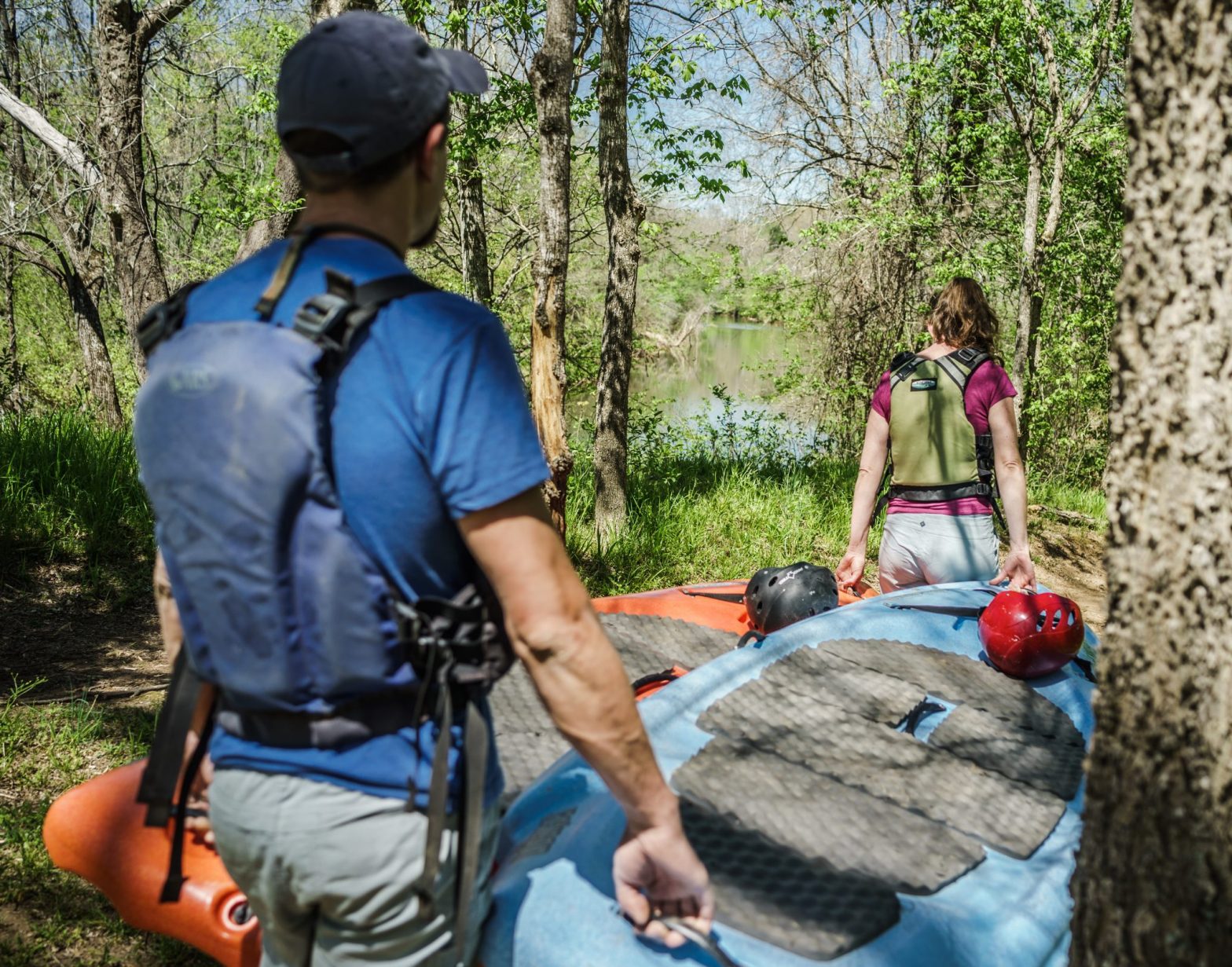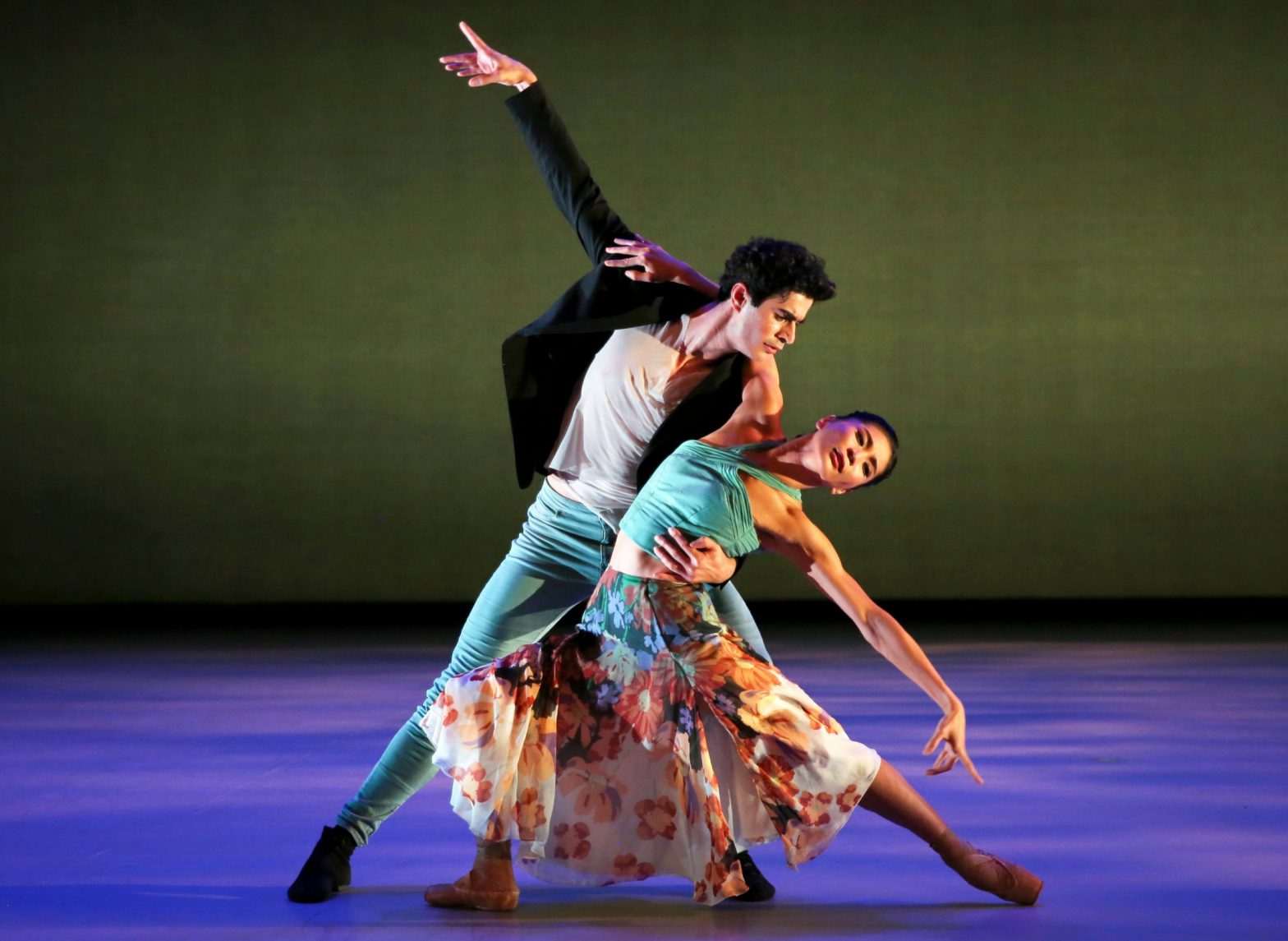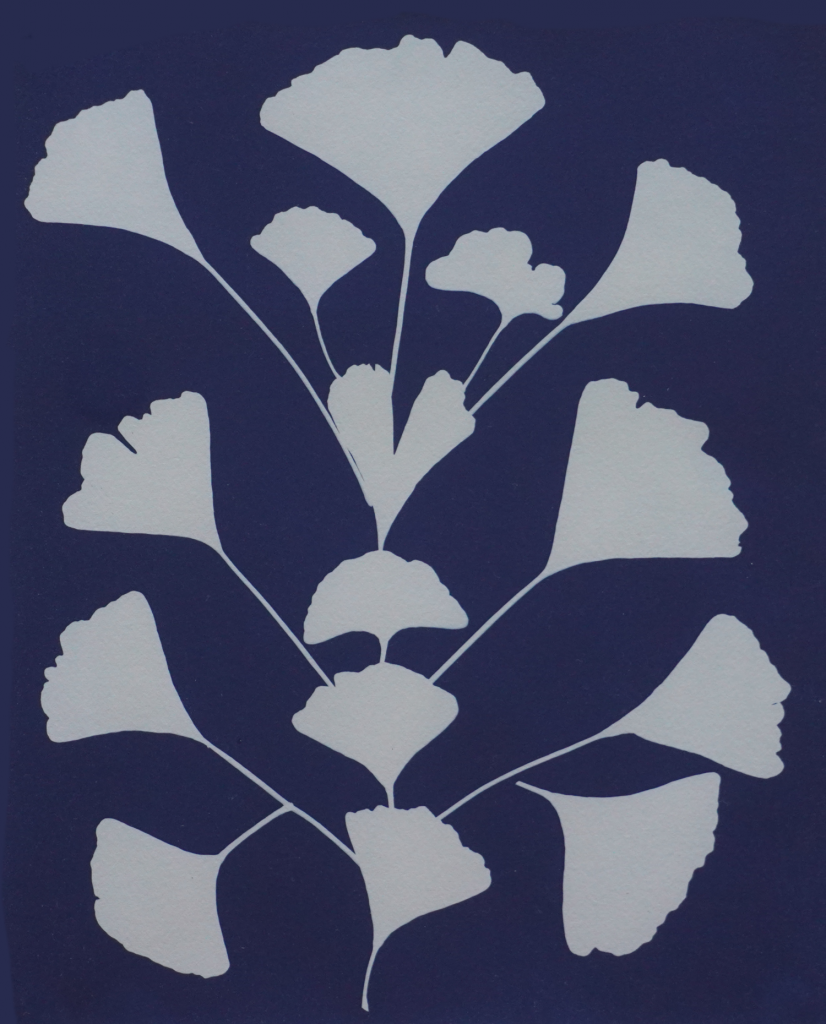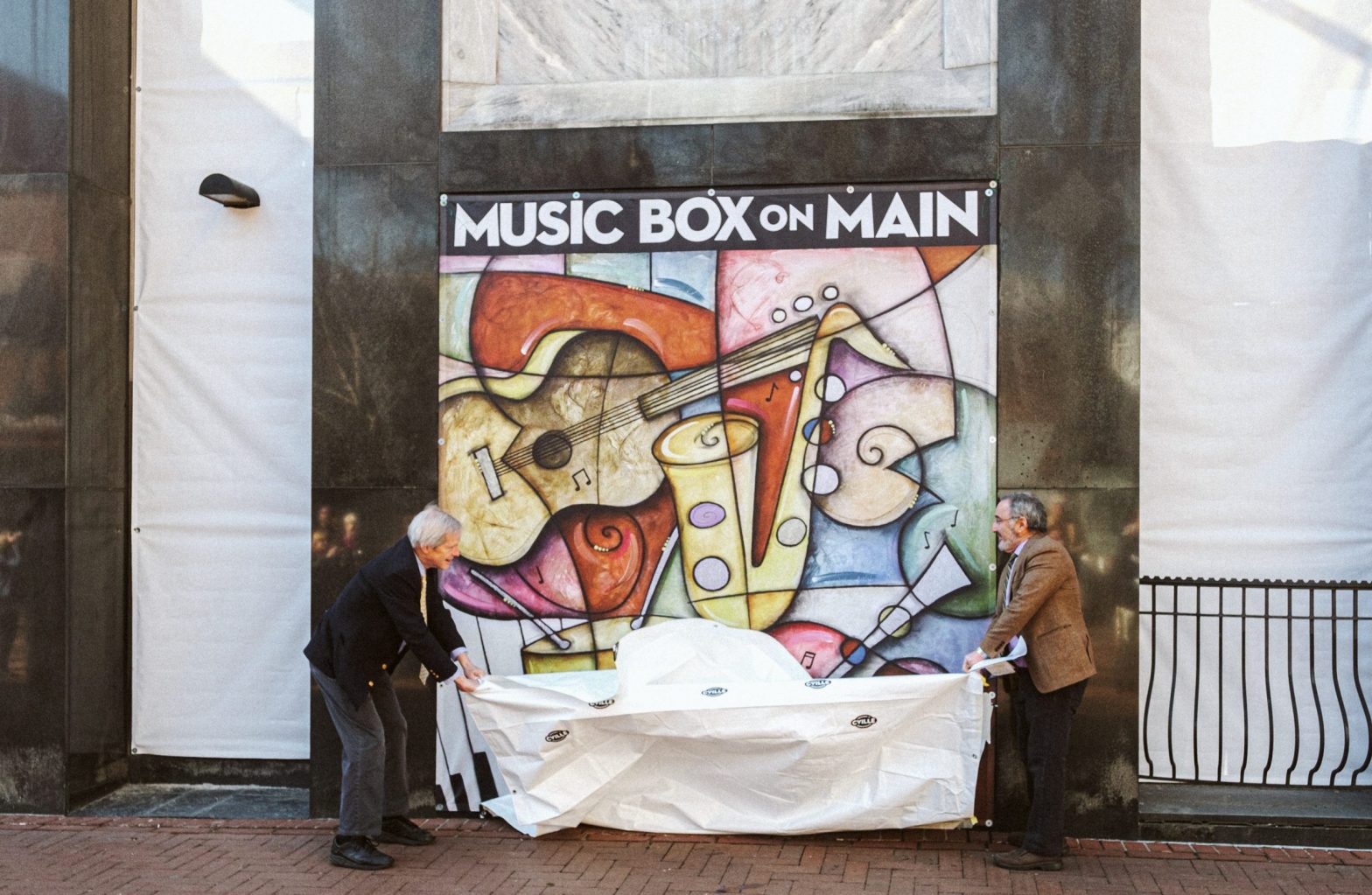There are no leaves on the trees, but signs of spring are visible at the Rivanna River. A dozen turtles sit on a log on the riverbank, their shells bluish, almond-shaped dots from a distance.
“What really has inspired us all along is just the wildness that’s accessible right from the city,” says Gabe Silver, co-owner of Rivanna River Company, which rents kayaks, tubes, and other river equipment. “Great blue heron, green heron—people see river otters right in city limits on the Rivanna. We have bald eagles that nest on the river right outside of town.”
Recently, more and more people have joined these critters. Silver reports that the pandemic “drove a really significant jump” in river usage, and that interest has remained high. The same dynamic has been visible across the region—1.7 million people visited Shenandoah National Park in 2020, a 17 percent increase from 2019.
On this Sunday afternoon, one of the year’s first truly warm days, squeals of joy can be heard from the playground in Riverview Park, and an intrepid young swimmer is splashing around in the river’s rocky shallows as a parent watches from the orangey-brown dirt of the bank.
The high level of interest makes the river’s health and accessibility all the more important. In January, the Thomas Jefferson Planning District Commission released an 86-page Urban Rivanna River Corridor Plan, packed full of recommendations for the river’s future. Both Charlottesville and Albemarle officially approved the plan in February. The river has flowed through the central Virginia hills for thousands of years—what will it take to keep it healthy for the next thousand?
Clams and worms and mayflies, oh my
“If you’re looking at just water quality, the river is impaired for biological health,” says Lisa Wittenborn, executive director of the Rivanna Conservation Alliance, a nonprofit that aims to clean and protect the river.
Her group, staffed by an enthusiastic corps of volunteers, tests the river’s biodiversity and bacteria levels multiple times per year. They monitor the presence of tiny river creatures—larva of dragonflies, damselflies, mayflies, stoneflies, plus clams and worms and crayfish and more—to see how the river is doing. Right now, “the little organisms that live in the river don’t have the diversity and abundance that we would like to see,” she says, and the bacteria levels are higher than ideal.
Water quality issues can be exacerbated if people litter and behave badly when they visit the river, but it’s the built environment around the water, rather than the recreational swimmers and boaters, that is most responsible. Four miles of river runs along the eastern edge of the city, and the river’s watershed covers 769 square miles, from the western edge of Albemarle County all the way through Fluvanna. From its headwaters in the Shenandoah, the river eventually feeds into the James and then the Chesapeake Bay.
“In such an urban system, with a lot of impervious surfaces, rainfall hits the ground and runs off immediately into our stormwater system, into our streams, and into the river,” says Wittenborn. Fast moving rainwater increases the amount of sediment in the stream, which makes it hard for river creatures to see and eat. The runoff also “picks up things like dog waste and trash, and washes those into the waterways. And that’s where a lot of the bacteria issues are coming from,” she says.
Despite these issues, Wittenborn says the data suggests that the conservationists are “holding the line.” A recent analysis of the last 15 years of biological data didn’t reveal many trends, suggesting that the river’s water quality issues aren’t getting worse.
“Actually, in four areas we identified places where the stream health scores had improved, statistically,” Wittenborn says. The group was able to connect those healthier locations to specific restoration projects and upgrades to the wastewater treatment plant. “All of those things seem to have made improvements in the stream health conditions downstream, so that was very encouraging.”
It’s difficult to come up with long-term solutions for these water-quality issues, since the area isn’t going to get less developed as time passes. Still, Wittenborn says, there are things people can do on their own properties to limit the amount of harmful runoff hitting the water. She encourages planting rain gardens or collecting rainwater in barrels. And larger developments should install bioretention areas, “big rain gardens that allow the water to collect and infiltrate down into the ground rather than running off.”
“Everything we do in the watershed is affecting the health of the river,” she says. “So we need people to think about what they’re doing in their own backyard, and how that is affecting our waterways. Because it all compounds.”

improved the river’s water quality in a few spots. Photo: Jack Looney
Touching the river
With Charlottesville’s next sweltering summer approaching, more and more people will be drawn toward the water.
“We have been open now for six years,” says Silver. “In that time, we have seen a steady increase in the usage of the river recreationally, with on-the-water recreation, but also on trails and recreation adjacent to the river.”
As that interest continues to flow, it’s crucial that everyone can safely and easily access the water.
“To some extent, the public resources for enabling recreation on and around the river haven’t really caught up with the demand, or have never kept pace with the demand,” Silver says. Parking lots at Riverview and Darden Towe parks fill up, it’s not always easy to reach those places on public transportation, and the river’s steep banks make it difficult to get down to the water.
When the Rivanna River Company, the Rivanna Conservation Alliance, and the city worked together to install a better water access point at Riverview Park, it “instantly became a place for people to go with kids and families to just wade around and play in the river, and touch the river,” Silver says. “We need more spots like that. It’s free, it’s always there in the summer when it’s hot, it can be a great place for kids to get to know nature, get to know rivers,” he says.
From the perspective of outdoor recreation, Silver isn’t yet concerned about human overuse. In an urban river corridor like this, “summer Saturdays being busy with human beings playing on the water is pretty typical,” he says. “If you go upriver or downriver from that main stretch between Darden Towe and Riverview Park, you still find, I think, a fairly peaceful experience.”
Moving forward, “It’s worth thinking about [how to] leverage the interest and enthusiasm for the Rivanna into caretaking for the Rivanna,” Silver says. His company is helping to organize Rivanna RiverFest on May 1, which will feature food trucks, live music, and opportunities to learn more about the river’s past and present.
“I think all of us in the outdoor recreation world want to believe that there is a connection between using a natural resource and coming to care for it both in our hearts and in our actions,” he says. “We can continue to work on ways to connect the dots for people who are newly using the river.”
Planning for the future
The Urban Rivanna Corridor Plan aims to “build a vision and develop an action plan for the urbanized section of the Rivanna River,” according to the report. Sandy Shackelford, director of planning and transportation at the Thomas Jefferson Planning District Commission, says the plan was created to facilitate coordination between the Charlottesville and Albemarle governments when it comes to policymaking in the Rivanna area.
The document doesn’t dictate which stretches of the banks are best for new development. “The local Land Use plans and the Comprehensive Plans have already identified where the development and redevelopment is appropriate,” Shackelford says. “We’re not changing that. But where development and redevelopment is already allowed, there are ways to do that with greater context sensitivity and awareness of environmental impacts.”
Since 2014, the planning agency has been researching the river and conducting community outreach in order to create a set of recommendations for the city and county.
The goals fall into a handful of different categories. The Environmental Protection section includes aims like “Encouraging the use of locally native plants for landscaping at parks and businesses,” and “Identifying and protecting the most sensitive biological and ecological areas by limiting access and installing signage.” In the Multi-Purpose Trails and Bridges section, the planning commission recommends “Providing seating areas at regular intervals along trails throughout the corridor.” In Development and Redevelopment, the report urges the city and county to “maximize the environmental sustainability and context sensitivity of new development.” The plan also encourages the localities to apply for grants to fund some of these initiatives.
In February, Charlottesville’s City Council amended the city’s Comprehensive Plan to include the Urban Rivanna Corridor Plan. Albemarle, currently in the process of updating its Comprehensive Plan, saw its Board of Supervisors endorse the plan and direct staff to consider it as the new Comprehensive Plan is ironed out.
Supporting the plan doesn’t mean its recommendations have become law, or even guarantee that the localities will follow the plan’s proposed course of action. “It doesn’t necessarily commit resources,” Shackelford says, “But it does give additional weight to staff being able to pursue some of these resources. That could be things like applying for grants or prioritizing work programs, or things like that.”
Shackelford says the planners tried to include realistic, short-term goals. Installing erosion control and flood prevention infrastructure like fencing along the bank could go into a parks department work plan “at a fairly low cost,” she says, and could have a big impact on the river’s health.
In some areas, like transportation, the plan recommends additional study. “We tried to think about things from an equity lens,” Shackelford says, “Things like increasing access by different modes of transportation, and thinking about who is going to have access to the park.”
She also points out that the river’s historic resources are not adequately cataloged. The report offers a cursory history of the river: Monacan Indians live throughout the region, and their historic capital, Rassawek, was located on the Rivanna, about 30 miles southeast of the city. In the antebellum era, enslaved laborers worked on plantations along the river’s banks. In the 19th century, Woolen Mills and Union Mills developed into major economic engines for the region. “So much local history happened around this really small section of the river corridor,” Shackelford says, and additional research will be required to ensure that history is well told.
From here, Shackelford says the next phase is creating an even more detailed master plan, with specific projects and cost estimates from engineers. Responsibility for undertaking some of the more complicated recommendations laid out in the plan lies with the area’s municipal governments.
“I thought the recommendations were great,” says Wittenborn. “I think the real question is just, are they going to be implemented? It doesn’t matter if you don’t follow through.”










